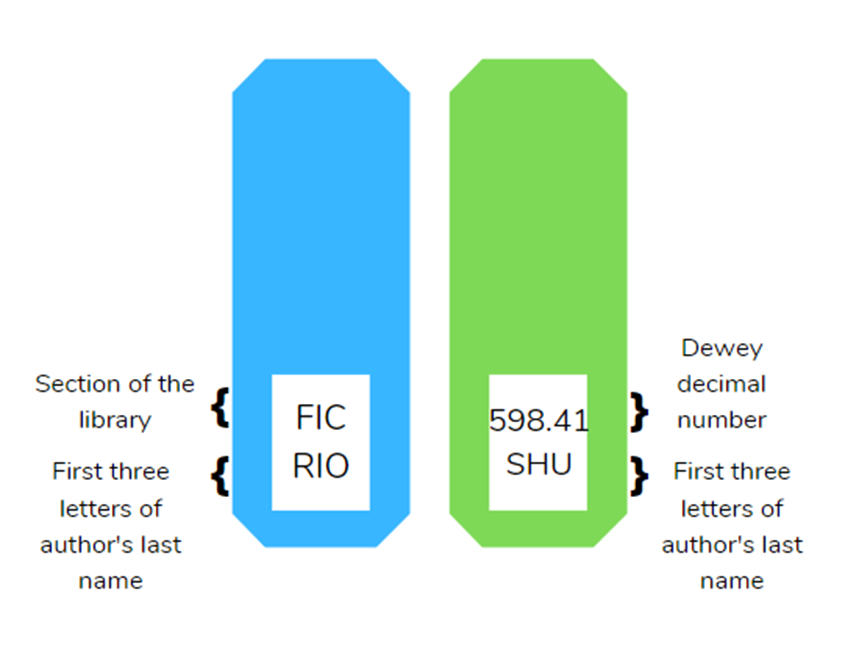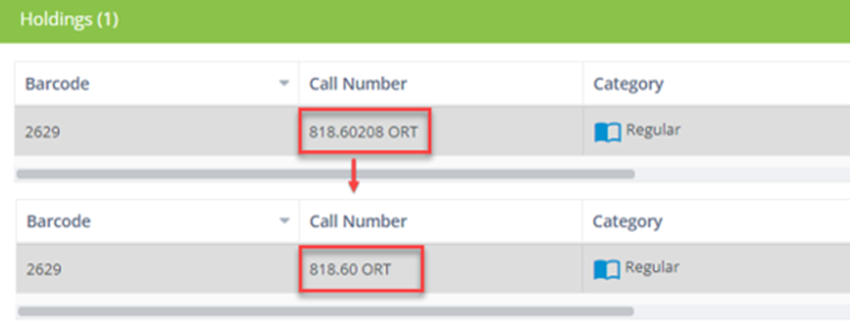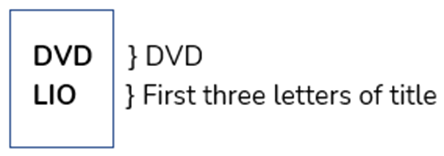- Print
- DarkLight
- PDF
If you've determined that the Dewey Decimal Classification scheme is the best fit for your library, you should know how that classification is expressed on spine labels.
Non-Fiction
According to the Dewey Decimal system, non-fiction books are assigned a number that corresponds to subject area. These numbers are three digits, followed by a decimal, and usually at least one more digit (but can be much longer depending on how specific your resource’s subject is). The second line of the call number will contain the first three letters of the author’s last name.
Fiction books are categorized a little differently. Most libraries put either F or Fic on the top line and then the first three letters of the author’s last name on the second line. Here is an example:

When you bring in a record from the databases, it may already have a Dewey Decimal number. This is because whomever cataloged that book uses the Dewey Decimal system at their library. It is important to remember that the way another library arranges their call number is possibly different from how you will want to arrange yours, so make sure to check the call number that comes on the record and see whether it fits in your library. For example, this resource is a non-fiction book that came in with call number 818.60208 ORT. For a smaller collection, a call number this long is not typically. It might be a better fit shorten the call number to 808.60 ORT. Also, be sure to make sure that the assigned call number fits in with the other books of that type within your library.

Fiction
The Dewey Decimal system assists in classifying works of non-fiction. For fiction books, the call number typically starts with FIC or F, followed by the first three letters of the author’s last name. Some libraries use brackets [FIC] around letters, while others do not. Whatever you decide, be sure to remain consistent so that your reports stay organized when printing alphabetically.
Other Resources
You may have resources that you want to separate from the standard non-fiction and fiction collections. Whenever this is done, make sure to indicate their location within your library on the spine label in some way. Here are some common categories that have their own section and examples of what their call numbers might look like:
Reference materials, such as dictionaries, atlases, or encyclopedias
Example: Webster's New geographical dictionary

Graphic novels
Example: Narwhal! Unicorn of the sea / by Ben Clanton

DVDs
Example: The Lion King

Equipment
Example: a Chromebook

Other Tips
• If you have multiple copies of the same exact book, you can add a copy number field to the holdings bar.
• If a resource does not have an author, use the first three letters of another piece of identifying information, such as the editor or title.



